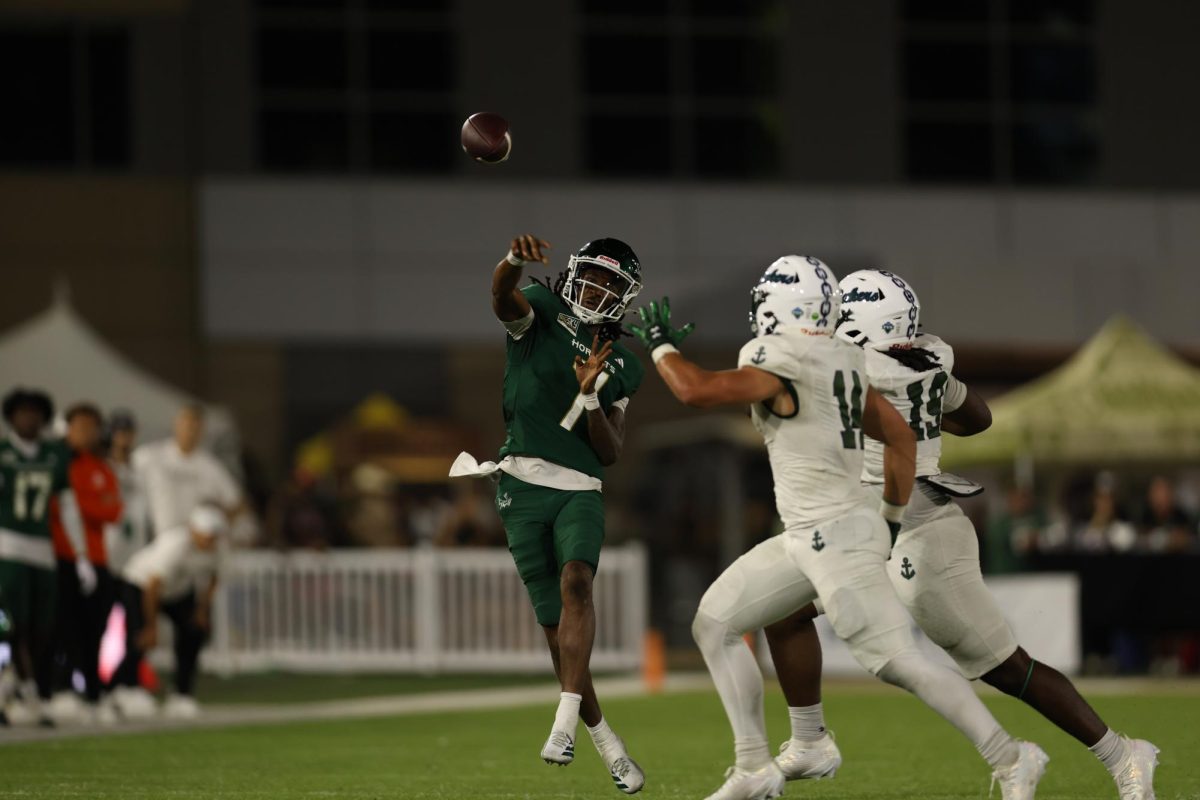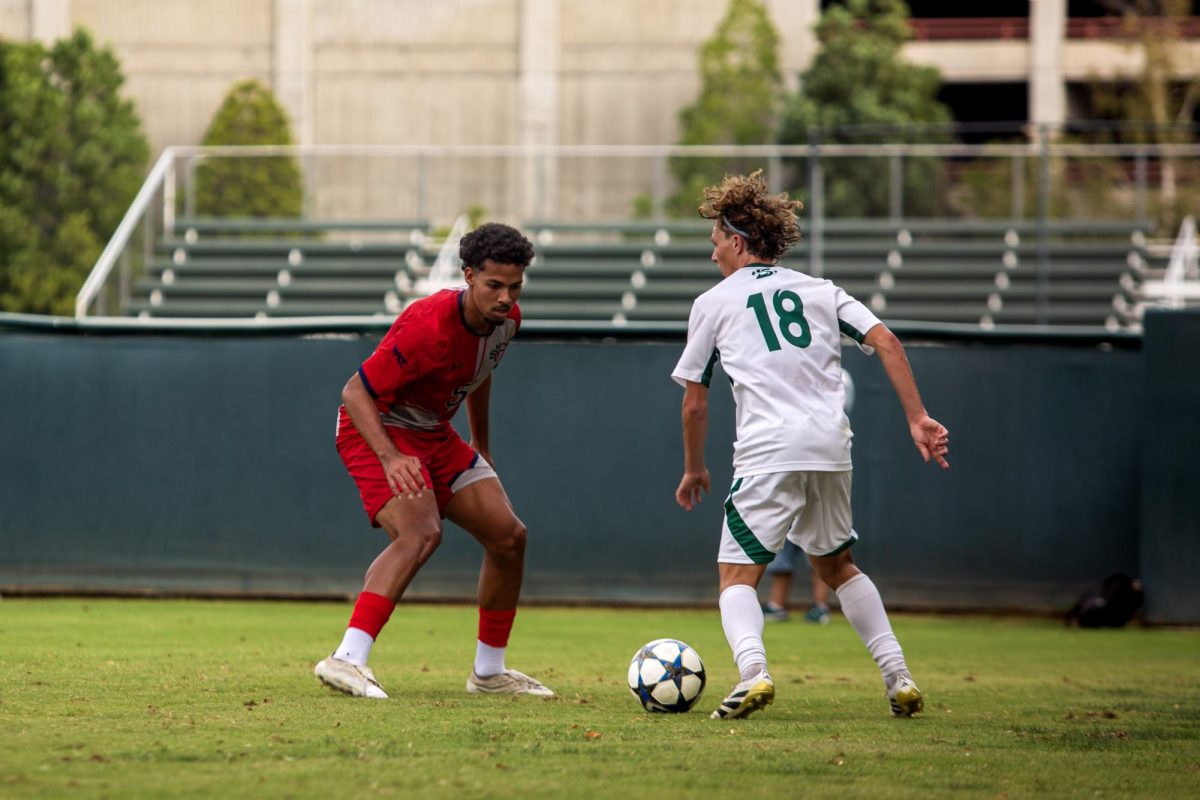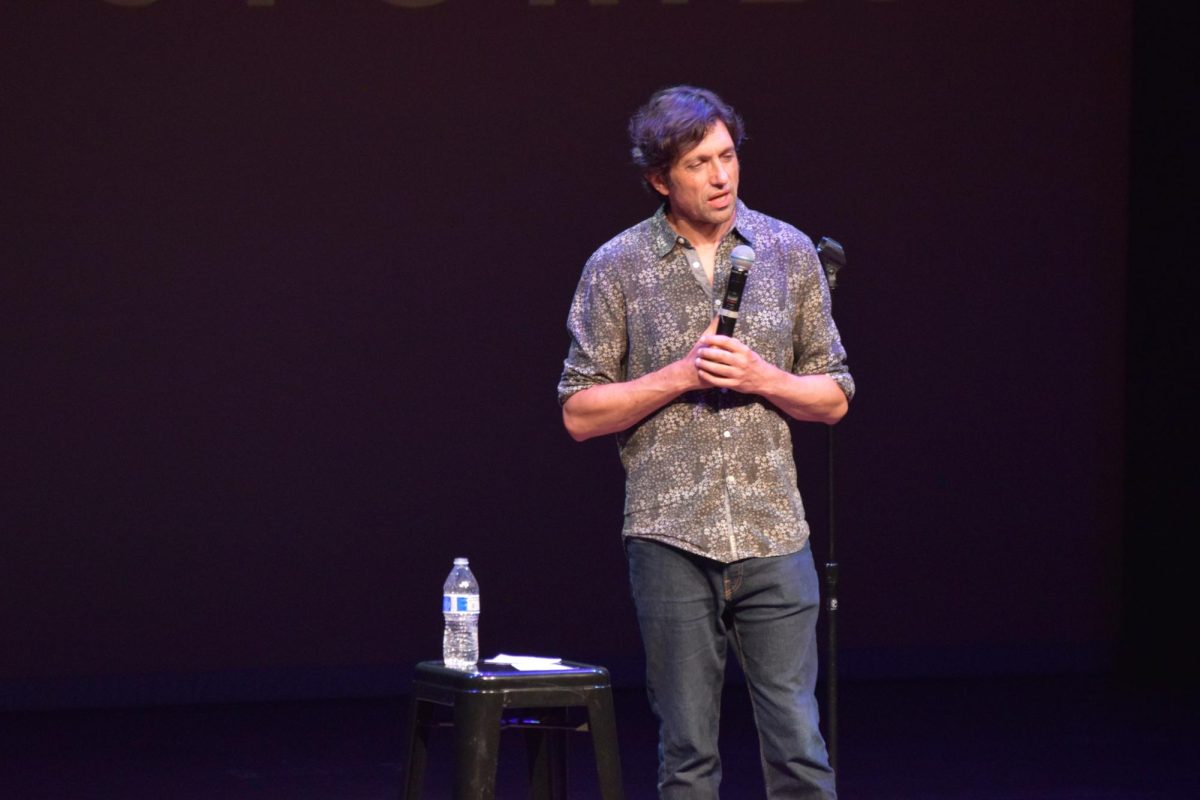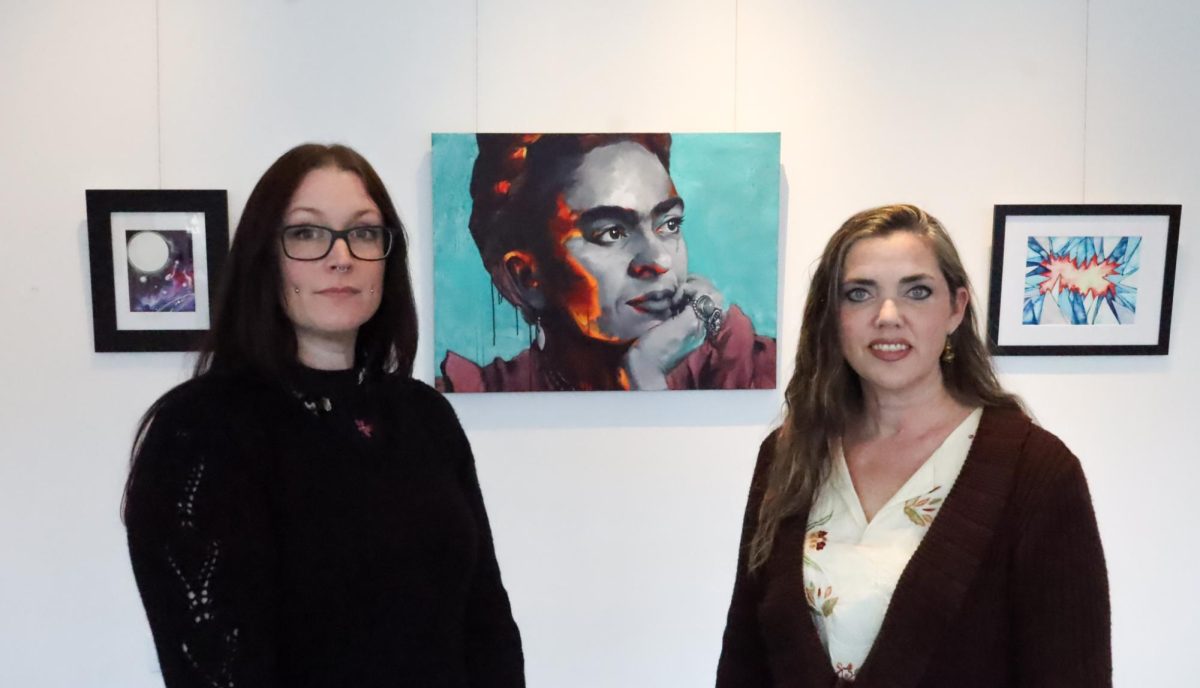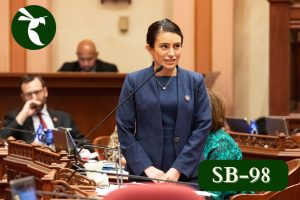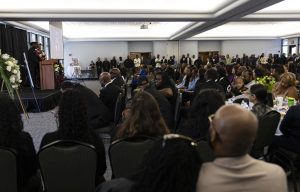Professor acknowledged for research in topology
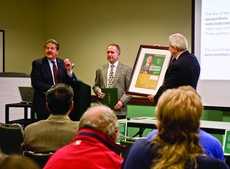
President Alexander Gonzalez presents Janusz Prajs with the 2009-10 award for research and creative activity. :
November 19, 2009
This year’s President’s Award for Research and Creative Activity was awarded to Janusz R. Prajs, associate professor in the department of mathematics and statistics.
Prajs was awarded for his extensive work in the area of topology, an abstract branch of pure mathematics. He presented his research in a lecture titled “The Nature of Mathematical Discovery” Nov. 10 in the University Union’s Foothill Suite.
“Professor Prajs’ research, publishing record and worldwide prominence in the field of topology have brought great pride to Sacramento State,” said Sacramento State President Alexander Gonzalez.
Originally from Poland, Prajs has been teaching mathematics at Sac State since 2003. Prior to his position at Sac State, Prajs taught at Opole University, Texas Tech University, Idaho State University and the University of Missouri at Rolla.
His research, consisting of more than 40 papers, has been published in various world-renowned publications, including the American Journal of Mathematics.
“He’s well-respected not just here at Sac State but throughout the country, throughout the world, in his field,” said Tom Schulte, professor of differential geometry in the mathematics and statistics department.
Prajs’ area of focus in the field of topology is homogeneous continua. To even slightly grasp the meaning of this complex mathematical concept, Prajs said it is necessary for students to have at least an undergraduate education in mathematics.
“Mathematics is like a foreign language itself. It means we cannot communicate with mathematics outside of the field and this is a problem,” Prajs said.
Prajs defines topology by using the crude example of a donut and the surface of a coffee cup.
“They are topologically the same, even though they look completely different, but it can be formed one to the other without breaking these rules that nothing is glued together, nothing is broken,” Prajs said.
As for homogeneous continua, Prajs said they are spaces that look the same from the viewpoint of each side.
“A circle is a perfect example of homogeneous continua,” Prajs said.
Prajs’ colleague, Marcus Marsh, professor of topology in the mathematics and statistics department, also praises Prajs for his allegiance to mathematical research.
“He’s a prolific researcher and he certainly deserves the award,” Marsh said. “He’s very enthusiastic, he’s very excited about the math research that he does.”
Prajs has had many successes in mathematics, although some seemed to start as failures. An event that stands out in Prajs’ memory is an international meeting with American mathematicians, at which Prajs presented the solution to a conjecture of another mathematician. Prajs said he was humiliated when a member of the meeting questioned his answer.
The incident persuaded Prajs to go over his results and check for errors.
“Then I had to admit in the end, that she was actually right,” Prajs said.
This experience, Prajs said, led to his greatest achievement. He was able to come up with significant results in another area of mathematics and use those results to go through habilitation.
In Poland, habilitation is the highest form of academic qualification a person can achieve. In terms of American education, habilitation is like a degree past the doctorate level, Prajs said.
Prajs said his mathematical ambition is to classify all homogeneous continua. This would take decades and generations to achieve, Prajs said. The adventure of the seemingly impossible endeavor, however, has made Prajs determined to reach for that goal.
Inna Gritsak can be reached at [email protected].

















































